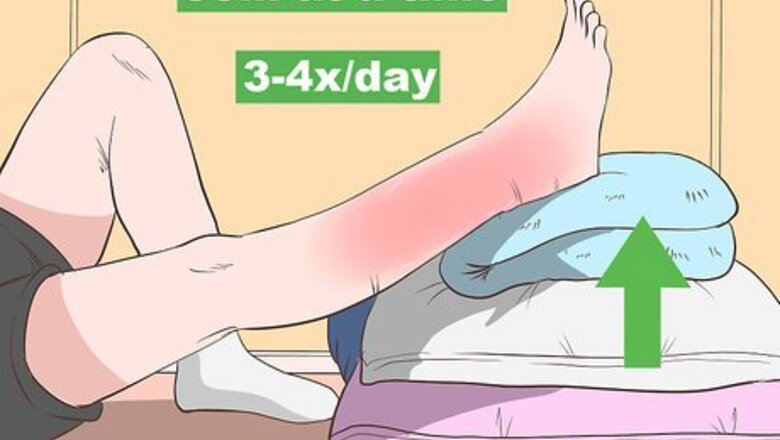
views
Immediate Relief
Take off any tight-fitting clothes. Clothes that constrict your waist, legs, or thighs can cause swelling in your legs. Take off any clothes that might be squeezing your legs and put on something loose and comfortable instead. Avoid tight leggings, jeans, pants, or garters. While tight stockings can help reduce swelling, it’s important to use compression stockings that are designed for this purpose and that fit you correctly.
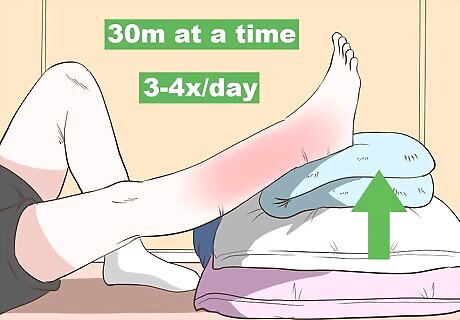
Elevate your leg above your heart. Sit back or lie down and use pillows, blankets, or an ottoman to elevate your swollen leg to a level above your heart. Alternatively, lie down on your bed or a yoga mat with your legs propped up along the wall or bedhead at a 90° angle. Stay in this position for 15-30 minutes at a time, or longer if you’re comfortable. Repeat this 3-4 times a day for as long as the swelling continues. Elevating your legs helps relieve pressure and reduce water retention in your legs. This can be especially helpful if you’ve been sitting or standing in the same position for extended periods of time. If you can, try putting several blocks (like exercise blocks) under your mattress so that you can keep your legs elevated as you sleep.
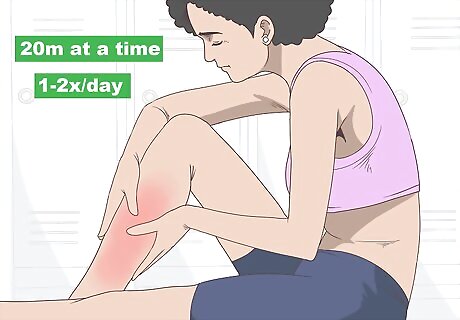
Massage your leg to improve circulation. Self-massage can help reduce swelling caused by pregnancy, edema, water retention, extended sitting, or a high-sodium diet. Use comfortably firm (not painful) strokes to massage the swollen leg, moving up your leg in the direction of your heart. Repeat this process for 20 minutes at a time, 1-2 times a day. Combine massage with elevation to help pull the built-up fluids and blood from your legs. Lie down with your legs straight up against a wall or the head of your bed, and massage one leg at a time in this position. If you have the means, you can also seek help from a massage therapist. A standard Swedish massage will generally do the trick. If you have more severe swelling, though, you may want to look for a therapist who practices specialized treatment for swelling.
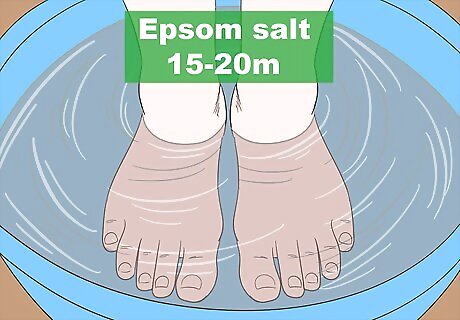
Soak your feet and ankles in an Epsom salt bath for pain relief. Prepare a cool to lukewarm bath deep enough to fit your full feet and ankles. Add about a cup (400g) of Epsom salt to the bath and gently mix it until the salt crystals dissolve. Then, soak your feet for 15 to 20 minutes to help manage any pain associated with your swelling. You can also add Epsom salts to a full bathtub and sit in it with your calves and thighs fully submerged if you have more extensive swelling. If your pain is severe enough that it impedes your everyday function or if it’s rapidly getting worse, seek medical help immediately.
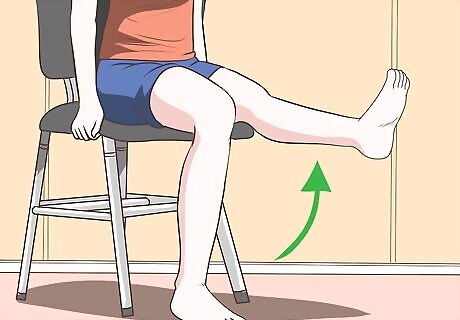
Take breaks when standing for extended periods. If you have to be on your feet for extended periods of time, try to schedule regular breaks where you sit or stretch your legs. If you have to stand for work, talk to your manager about ensuring you get regular breaks, or otherwise seeking accommodations to minimize the amount of time you have to stand. Ideally, you should get at least 15 minutes off your feet every 2-3 hours. Doing so can help provide immediate relief to swelling caused by extended periods of standing still. If you cannot get the breaks you require, see if other accommodations can be made. If, for example, you work as a cashier, ask your manager about getting a stool behind the register.
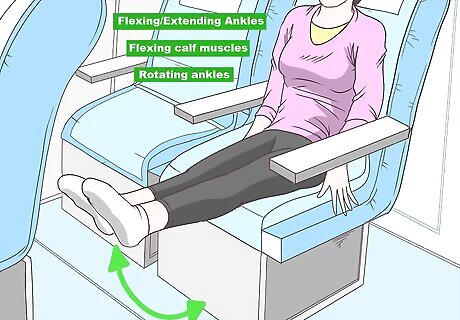
Perform foot and ankle exercises when flying. When you fly, there are a number of exercises you can do right in your seat to help minimize swelling. In addition to taking a short walk up and down the aisle every hour or so, try: Flexing and extending your ankles for 10-15 reps every hour Flexing your calf muscles Rotating each ankle 10-15 times every hour Keeping your shoes off as much as possible
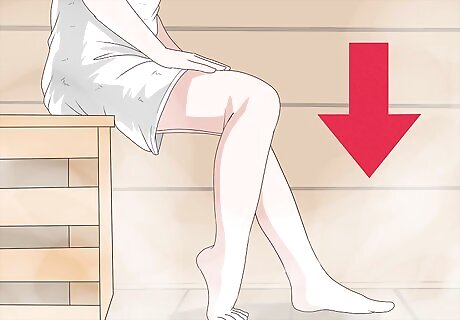
Reduce your exposure to extreme temperatures. Very hot and very cold temperatures can increase the fluid buildup that causes swelling. Remove yourself from any extreme temperatures as soon as possible. This should help minimize swelling. This includes limiting the amount of time you spend in hot tubs, saunas, and very hot baths.
Treatments for Recurring Swelling
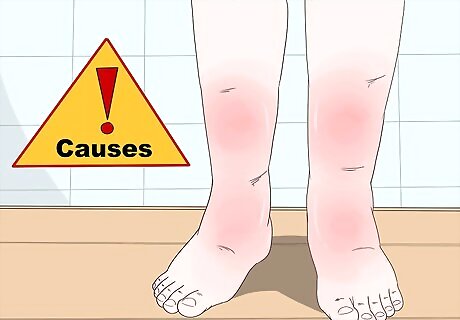
Work with your doctor to find the cause of your swelling. Swelling is typically a symptom of an underlying condition. Generally, the best way to treat recurring swelling is to treat the underlying cause. In some cases, such as with frequent travel or pregnancy, the cause may be obvious. In others, you may need to see your doctor for a diagnosis. Common causes of leg swelling include: Kidney, liver, or heart disease Lymphedema (blockage in the lymph system) Blood clots Varicose veins Injury to the leg Obesity Blood pressure medications Hormone medications Pregnancy Extended periods spent sitting down or standing Poor diet (especially excess salt)
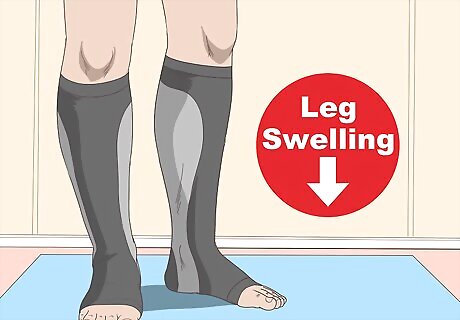
Wear compression stockings to reduce or prevent swelling. Compression socks and stockings are both typically available from drug stores as well as online. Wearing these stockings throughout the course of your regular day can help minimize and in some cases prevent recurring leg swelling. You don’t need to wear your stockings all the time, but they should be worn when you’re at school or work, when you’re out running errands, or otherwise for a few hours every day. Get help from a medical professional when sizing your socks and choosing the right material for your lifestyle. Socks that are too tight can cause sores.
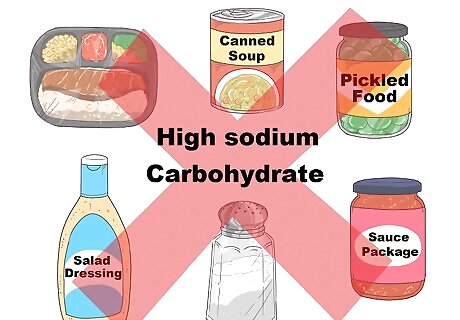
Reduce your sodium and carbohydrate intake. Eating a healthy diet low in sodium and carbohydrates can help reduce recurring swelling by minimizing fluid retention. Aim for a diet that is rich in fresh vegetables, lean proteins, fruit, and whole grains. Avoid added sugars, high sodium foods, and processed or prepackaged foods which often have added salt. High sodium food includes most frozen and prepared foods, canned goods, packaged sauces and soups, salad dressings, and pickled foods. While sea salt is considered a healthier alternative to table salt in some areas, both sea salt and table salt have roughly the same amount of sodium by weight. If you do choose to use sea salt, it still needs to be in moderation. In addition, it’s generally advised that people with leg swelling avoid frequent caffeinated beverages and alcohol.
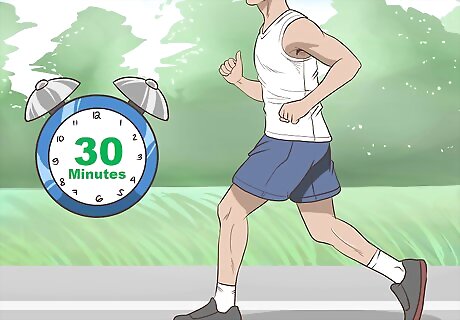
Exercise your legs at least 20-30 minutes every day. Engaging your legs in mild to moderate cardiovascular activity for half an hour every day can help minimize swelling and reduce episodes of recurrence. Look for activities that specifically engage your legs, such as walking, jogging, or biking. Swimming is a highly recommended activity for those with moderate to severe leg pain. Since it’s a non-weight-bearing activity, it allows you to exercise without increasing pain or stress on the leg.
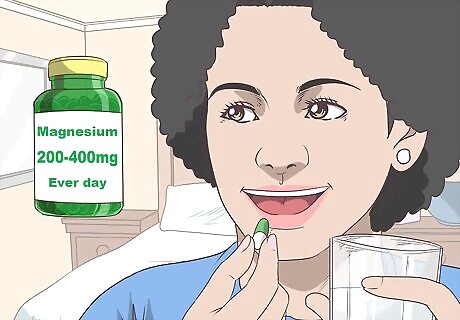
Take 200-400 mg of magnesium every day. Adding a magnesium supplement to your diet can help limit pain in swollen legs. Take your supplement every day with a meal to optimize your absorption. Always talk to your health care practitioner before you start any new supplements or make any major dietary changes.
Try vitamin B12 supplements to reduce water retention. A vitamin B12 deficiency can cause anemia, which can lead to a variety of harmful symptoms, including edema in the legs or feet. If you’re concerned that your leg swelling might be related to a vitamin B12 deficiency, talk to your doctor about getting tested and taking supplements. You can also get vitamin B12 from a variety of foods, including seafood (such as clams, salmon, tuna, and trout), liver, meat (such as beef and chicken), eggs, diary products (like yogurt or milk), and fortified cereals.
Medical Treatment
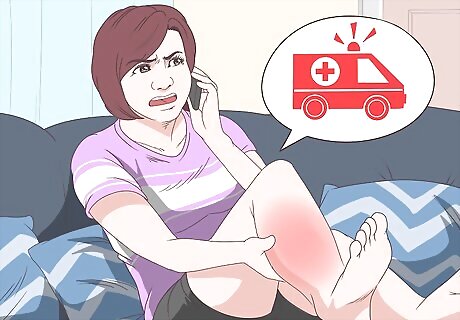
Seek immediate help if your pain gets worse or sets in suddenly. If your pain comes about very quickly, go to your local urgent care facility as soon as possible. Likewise, if it is severe enough that it interferes with normal function, get immediate help. Even if your pain isn't getting progressively worse, severe pain can be a sign of a larger medical problem. One major concern is deep vein thrombosis, which usually results in swelling in the calf area. Unlike the fluid swelling caused by edema, swelling caused by deep vein thrombosis usually results in the leg getting hard, red, hot, and rapidly increasing in size.
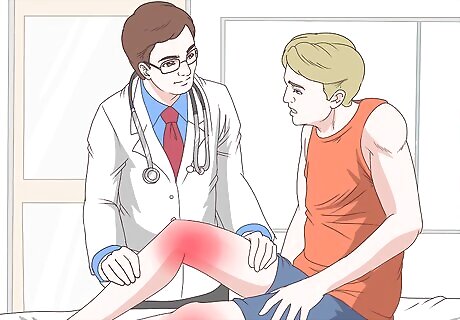
See a doctor immediately if your swelling gets worse. Rapid swelling or worsening swelling may be an indicator of a blood clot or another medical condition that needs emergency attention. If you notice your swelling is quickly getting worse, seek emergency medical help.
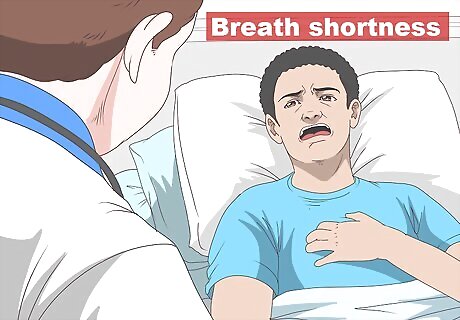
Go to the emergency room if you can't breathe. You should also seek emergency help if you experience any shortness of breath, chest pain, or tightness in your chest. These are symptoms of medical emergencies that need immediate care, such as a heart attack or a blood clot in your lung. Look out for related emergency symptoms, like coughing up blood, feeling dizzy or faint, or having trouble breathing when you’re lying flat on your back.
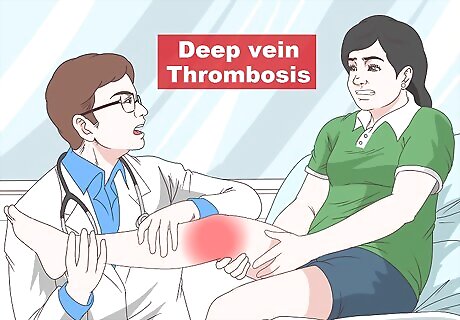
Consult your doctor if you experience swelling on one side. Swelling on one side of your leg can be an indicator of deep vein thrombosis, a type of blood clot that forms in the deep veins of the legs. Call your doctor and see if an additional appointment or testing is necessary. Additional signs of deep vein thrombosis include shortness of breath, a rapid pulse, chest pains, and shallow breathing if the thrombosis turns into a pulmonary embolism. Your leg or foot may also look red or feel warm to the touch.
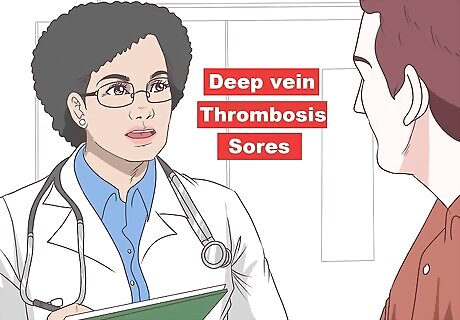
Get a doctor to evaluate blisters and ulcerations. Blisters, ulcers, and other sores experienced along with swelling may be due to phlebitis, which can put you at risk of infection. Make a doctor’s appointment immediately if you notice any sores on your feet or legs. Depending on the severity of your sores, your doctor may recommend monitoring, antibiotics, or outpatient surgical care.
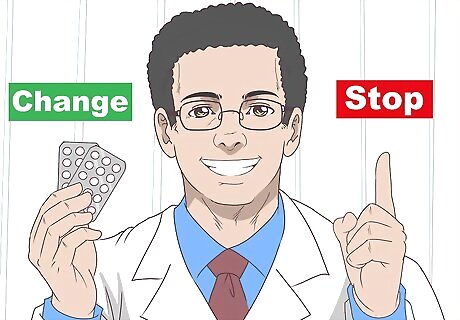
Ask about stopping or changing medications that cause swelling. If you think your medications are causing or contributing to your swelling, talk to your health care practitioner about altering your medications. You may need to stop and try a different medication, change your dose, or stop taking certain groups of medication in general. Types of medications that may contribute to swelling include antidepressants, blood pressure medications, hormones, and steroids.










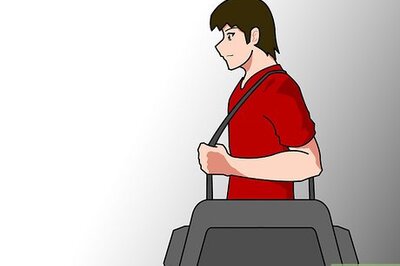
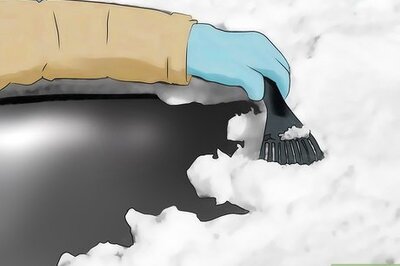



Comments
0 comment